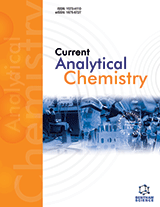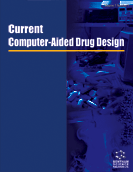Abstract
As the significance of hematopoietic stem cell transplantation (HSCT) is constantly rising, the scarcity of matched donors is proving to be a troubling issue. Cord blood (CB) is an important source of stem cells (SC) for transplantation. It has been used in the last two decades for approximately 4500 transplantations. Its collection, cryopreservation, banking and thawing techniques pose unique challenges to clinicians and researchers CB has abundant stem cell with impressive proliferative capacity. On the other hand, CBs immunological system has a naïve and more tolerant nature. Except for the biological aspects, few ethical issues have become a concern for transplantation teams who use CB. There are few advantages of CB over bone marrow, especially the lower rates of acute and chronic graft-versus-host disease (GVHD) after transplantation. On the other hand, there are relatively high rates of early treatment related mortality in cord blood transplantation (CBT). This is related to the small nucleated cell (NC) dose infused from each CB unit. The clinical experience in CBT, especially in children, is encouraging. When using adequate number of NC/kg, results in CBT for malignant and non-malignant diseases are comparable to bone marrow transplantation (BMT). In this article, a comprehensive review of the largest scale studies is presented. There is a continuous search for an optimal way to deal with delayed engraftment of CB and its implication. The current investigational, and also first clinical trials using diverse methods to overcome high rates of TRM are reviewed. Almost twenty years after the first CBT was preformed, many advocate for a routine parallel search, BM and CB, for unrelated donor. Future uses of CB might also be in the field of gene transfer and non hematopietic injured tissues repair.
Keywords: Cord blood, stem cell, transplantation, graft versus host disease, engraftment, plasticity
Current Medicinal Chemistry
Title: Human Umbilical Cord Blood Biology, Transplantation and Plasticity
Volume: 13 Issue: 11
Author(s): Gal Goldstein, Amos Toren and Arnon Nagler
Affiliation:
Keywords: Cord blood, stem cell, transplantation, graft versus host disease, engraftment, plasticity
Abstract: As the significance of hematopoietic stem cell transplantation (HSCT) is constantly rising, the scarcity of matched donors is proving to be a troubling issue. Cord blood (CB) is an important source of stem cells (SC) for transplantation. It has been used in the last two decades for approximately 4500 transplantations. Its collection, cryopreservation, banking and thawing techniques pose unique challenges to clinicians and researchers CB has abundant stem cell with impressive proliferative capacity. On the other hand, CBs immunological system has a naïve and more tolerant nature. Except for the biological aspects, few ethical issues have become a concern for transplantation teams who use CB. There are few advantages of CB over bone marrow, especially the lower rates of acute and chronic graft-versus-host disease (GVHD) after transplantation. On the other hand, there are relatively high rates of early treatment related mortality in cord blood transplantation (CBT). This is related to the small nucleated cell (NC) dose infused from each CB unit. The clinical experience in CBT, especially in children, is encouraging. When using adequate number of NC/kg, results in CBT for malignant and non-malignant diseases are comparable to bone marrow transplantation (BMT). In this article, a comprehensive review of the largest scale studies is presented. There is a continuous search for an optimal way to deal with delayed engraftment of CB and its implication. The current investigational, and also first clinical trials using diverse methods to overcome high rates of TRM are reviewed. Almost twenty years after the first CBT was preformed, many advocate for a routine parallel search, BM and CB, for unrelated donor. Future uses of CB might also be in the field of gene transfer and non hematopietic injured tissues repair.
Export Options
About this article
Cite this article as:
Goldstein Gal, Toren Amos and Nagler Arnon, Human Umbilical Cord Blood Biology, Transplantation and Plasticity, Current Medicinal Chemistry 2006; 13 (11) . https://dx.doi.org/10.2174/092986706776872998
| DOI https://dx.doi.org/10.2174/092986706776872998 |
Print ISSN 0929-8673 |
| Publisher Name Bentham Science Publisher |
Online ISSN 1875-533X |
 4
4
- Author Guidelines
- Bentham Author Support Services (BASS)
- Graphical Abstracts
- Fabricating and Stating False Information
- Research Misconduct
- Post Publication Discussions and Corrections
- Publishing Ethics and Rectitude
- Increase Visibility of Your Article
- Archiving Policies
- Peer Review Workflow
- Order Your Article Before Print
- Promote Your Article
- Manuscript Transfer Facility
- Editorial Policies
- Allegations from Whistleblowers
- Announcements


























